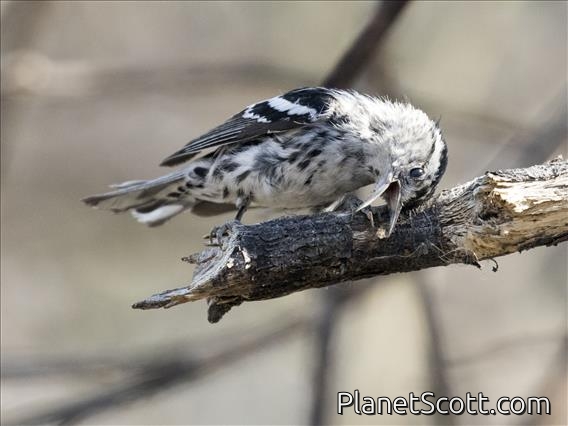Black-and-white Warbler (Mniotilta varia)

Black-and-white Warbler (Mniotilta varia)

Black-and-white Warbler (Mniotilta varia)


×



Black-and-white Warbler (Mniotilta varia)

Black-and-white Warbler (Mniotilta varia)
About Black-and-white Warbler (Mniotilta varia)
- Kingdom: Animals
- Phylum: Chordates
- Class: Birds
- Order: Perching Birds
- Family: New World Warblers
The black-and-white warbler is a species of New World warbler, and the only member of its genus, Mniotilta. It breeds in northern and eastern North America and winters in Florida, Central America, and the West Indies down to Peru. This species is a very rare vagrant to western Europe. Relative to other New World warblers, it is not well studied.
Source: Wikipedia
Trips
Visits
-
2007-10-10
La Mancha, Mexico -
2008-01-06
Singayta, Mexico -
2009-01-14
Cozumel, Mexico -
2009-01-20
Crooked Tree, Belize -
2009-02-03
Los Tarrales, Guatemala -
2009-02-20
Santa Elena - Hidden Valley, Costa Rica -
2009-02-21
Reserva Monteverde, Costa Rica -
2009-03-19
Punta Patino, Panama -
2012-06-04
Grayling, United States of America -
2012-07-09
Sax-Zim Bog, United States of Americaheard -
2013-04-19
Bolivar Peninsula, United States of America -
2014-01-20
Zapoten, Dominican Republic -
2014-01-21
Puerto Escondido, Dominican Republic -
2014-01-22
El Aceitillar, Dominican Republic -
2014-01-23
Cachote, Dominican Republic -
2014-01-26
Los Haitises National Park, Dominican Republic -
2015-05-24
Montrose Point, United States of America -
2015-11-01
El Valle de Anton, Panama -
2016-01-01
Bosque Nacional El Yunque, United States of America -
2016-01-05
Bosque Estatal de Maricao, United States of America -
2019-11-03
Alta Plaza Park, United States of America -
2020-02-01
San Sebastian del Oeste, Mexico -
2023-02-07
Parque Natural Chicaque, Colombia -
2023-02-12
TInamou Birding Nature Reserve, Colombia -
2023-05-15
Burnidge Forest Preserve, United States of America -
2023-09-30
La Virgen del Socorro, Costa Rica -
2023-10-01
La Virgen del Socorro, Costa Rica -
2023-10-04
Parque Nacional Volcan Arenal, Costa Rica -
2024-01-27
Vinales, Cuba -
2024-01-28
Vinales, Cuba -
2024-01-30
Sabanas de Soplillar, Cuba -
2024-01-31
Cueva de los Peces, Cuba -
2024-02-01
Trinidad, Cuba -
2024-02-03
Cayo Coco, Cuba -
2024-02-05
Sierra del Chorillo, Cuba -
2024-03-26
Monte Alban, Mexico -
2024-10-11
El Dorado, Colombia





